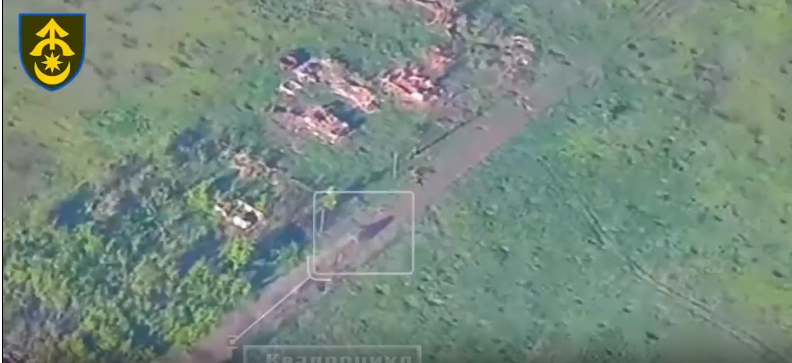The roar of engines rumble across no man’s land before a pack of Russian soldiers mounted on motorbikes emerge from a cloud of dust on the horizon. Ukrainian drones spring into action and the race is on. Without any cover, the riders have just minutes to zigzag across mines and craters to reach an enemy trench-line before they are picked off. The odds are not in their favour. Since they were trialled over a year ago, most motorbike attacks have ended in failure, with the majority of riders killed before they can reach their target. Yet, those that are successful solve a key tactical challenge in Ukraine: how to cross an open battlefield under constant surveillance from above – and fast. Russia’s military is said to be planning to systematically integrate motorbikes across the front ahead of new offensives. Run, stab, escape: Plenty of lives will be lost, but Russia’s precious armoured vehicles will be saved – an apparent victory in the eyes of a military that has a steady stream of manpower, but is forced to draw on a rusting stockpile of Soviet-era tanks that have proven unsuitable for the battlefields of Ukraine.
In early May, another Russian assault aimed at the village of Vil’ne Pole in southern Donetsk ended similarly. Up to 70 motorbikes, 90 troops and 60 vehicles were reportedly destroyed by a mixture of mines, drones and artillery.


Credit: Telegram Khortytsky_wind Ukraine’s 110th Mechanised Brigade then used drones to knock out at least 20 motorbikes. “Another day – a few more burned ‘iron horses’,” the unit mocked. The motorbikes are usually the first phase of a planned multi-wave attack, sent out without cover to probe and exploit weak points, before Russia sends in the heavier equipment.
Valerii Riabykh, a Ukrainian weapons analyst and editor of Defence Express, said: “The main idea here is to cut the time spent getting through the front line kill-zone, which is wider now than it was earlier in the war. “While they now have fewer armoured vehicles as well as have no restriction in melting their manpower, the motorbikes are just the thing for the job,” he added. Motorbikes can travel roughly 45mph across harsh terrain, while small first-person-view drones move at more than double that speed. But the drones have to get from their base to the battlefield, by which time the riders have enough time to reach the trenches. Pavlo Narozhnyi, a Ukrainian military expert, said: “The riders could have five to 10 minutes to storm Ukrainian trenches and attack, often outnumbering those inside.”
By moving fast and spreading out, bikes and buggies are starting to prove “very effective” against Ukrainian artillery and unmanned aerial vehicles (UAVs), he added. “They now make up 20 to 25 per cent of Russian assaults. It is hard for Ukraine to sustain such relentless attacks,” added Mr Narozhnyi, who is also founder of Reactive Post, a non-profit that supports Ukraine’s artillery brigades.

Ukraine’s 28th Mechanised Brigade are facing the brunt of this evolving tactic as they hold the line in the besieged town of Toretsk, just east of the vital military hub of Pokrovsk. Yevhen Alkhimov, a spokesman for the unit, said: “It’s a tactic of a thousand cuts. “These bike assaults are made to overload our drone units and throw as many personnel as far as possible to disturb our logistics, forcing us to spend more time, drones and ammunition to find and eliminate them.” Individual attacks are not effective on their own, Mr Alkhimov said, but as part of a broader tactical plan of exhausting and destabilising Ukrainian defences, “they are doing their job”. The riders’ task is not to attack infantry, he explained, but get further enough behind Ukrainian lines to attack mortar crews and drone units – more specialised soldiers that are harder to replace, he explained. Ukrainian soldiers are starting to call this the “run, stab and escape” tactic.

Spring has brought better weather, improving the ground conditions and allowing Russians on bikes to nudge and probe Ukrainian lines near-daily. It takes one successful – and lucky – attack to shift a piece of the front. According to the Institute for the Study of War, a US-based think tank, Russia is leveraging motorbikes to advance and seize as much Ukrainian land before a looming, yet elusive ceasefire. The once-haphazard assaults are also growing in sophistication, flanking columns of bikes with electronic warfare support, and sending bikes out with two riders, so if one is killed by a UAV, the pack keeps moving. In response to some recent successes, the slow cogs of Russia’s military command are turning. Reports suggest it plans to integrate motorbike units into Russian formations and perhaps even issue bikes to troops as standard equipment, signalling Moscow’s intent to formalise and centralise their usage in combat. Under skies ruled by drones, “we will see a lot more bikes, buggies, scooters, cars at the front,” Mr Narozhnyi said. “Its a new war.” Broaden your horizons with award-winning British journalism. Try The Telegraph free for 1 month with unlimited access to our award-winning website, exclusive app, money-saving offers and more.





































